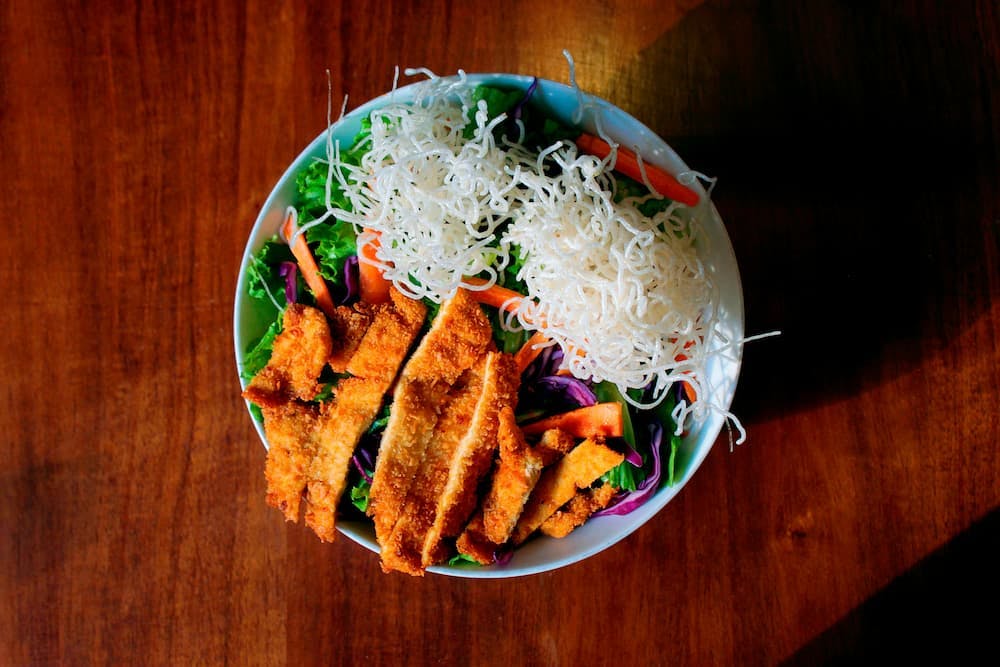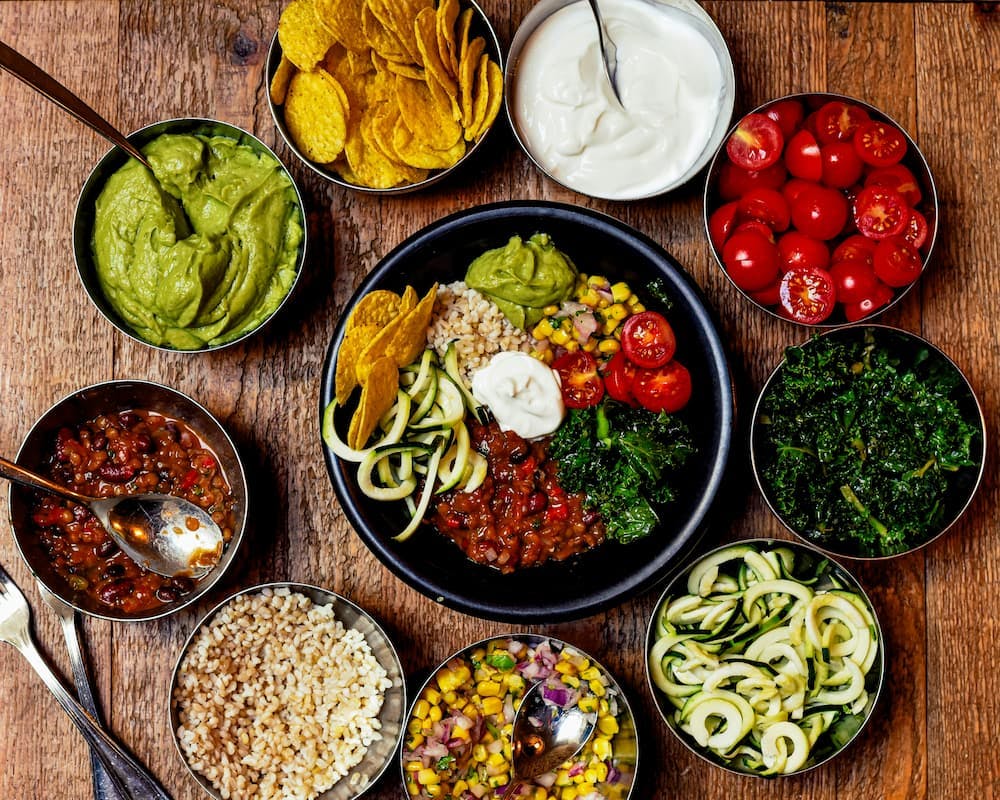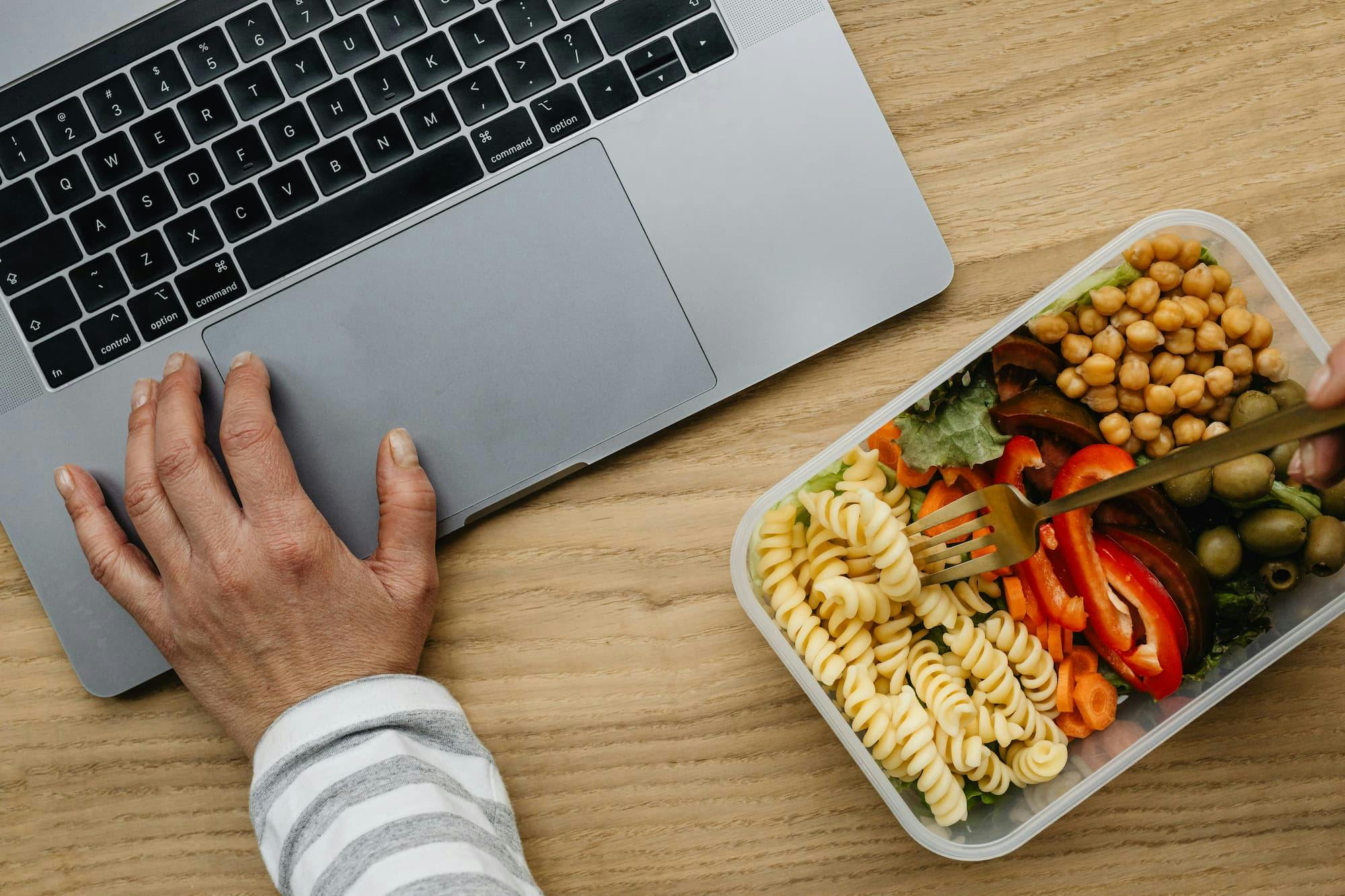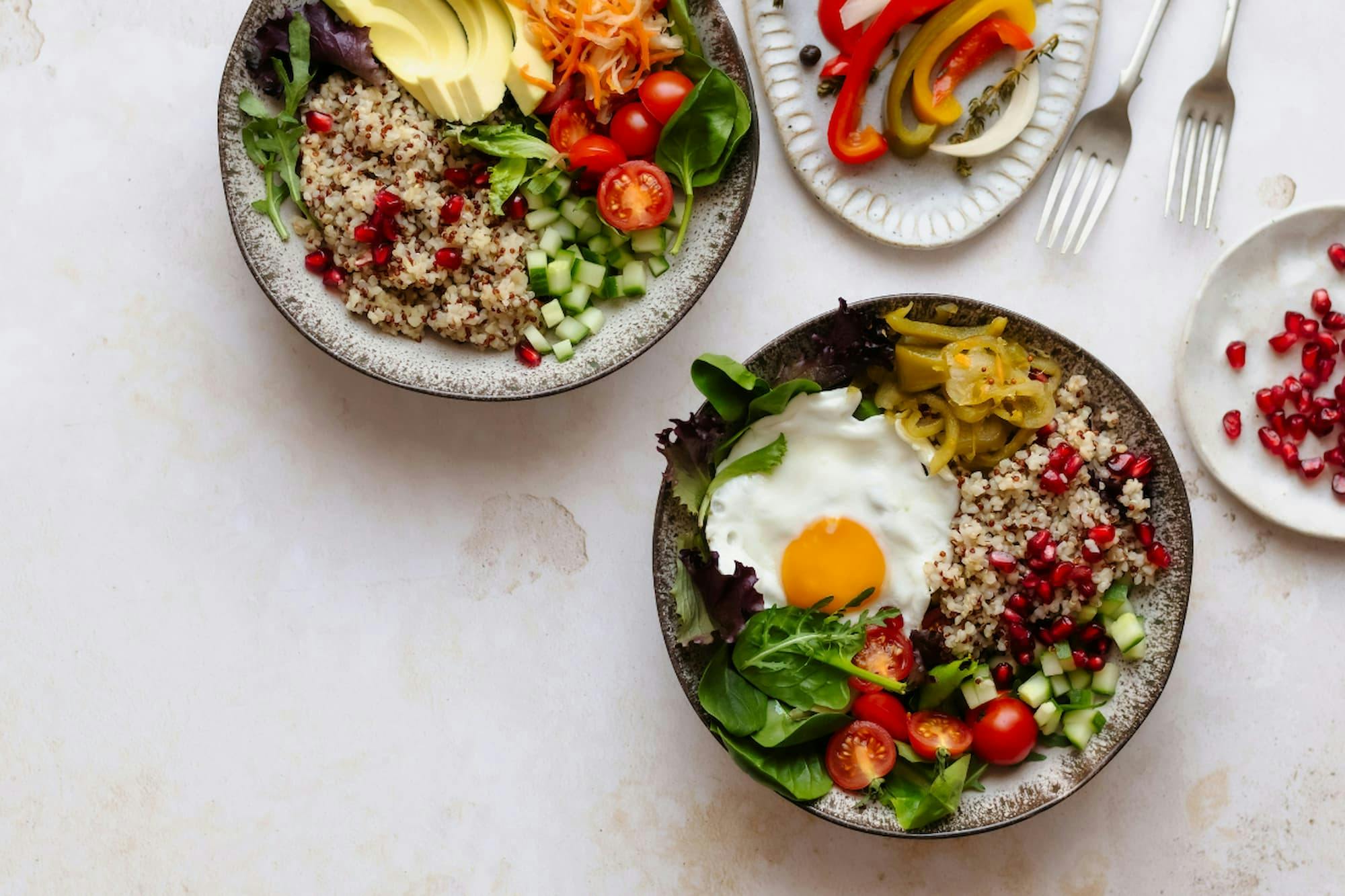Catering for dietary requirements can feel overwhelming, but there’s an easy solution. Read on to learn how to plan meals that everyone can enjoy effortlessly.
When planning an event, the goal is to make it enjoyable and stress-free for everyone.
One key ingredient to a successful gathering? Great food! It brings people together, fuels conversations, and leaves a lasting impression.
But to truly make an event inclusive, we need to think beyond the menu's taste. Imagine this: one in ten adults in the U.S. suffers from food allergies, with many having experienced severe reactions.
That’s a big number—and it highlights why knowing how to cater for dietary requirements is not just thoughtful, but essential.
Dietary restrictions aren’t limited to allergies. They can stem from lifestyle choices, health goals, or cultural and religious practices. Ignoring these needs can leave attendees feeling excluded or even unsafe.
So, how can you ensure your corporate lunch caters to everyone?
Let’s explore the most common dietary requirements and how to create delicious menus that include everyone.
Why Catering for Dietary Requirements is Crucial?
Catering for dietary requirements is essential because it shows respect for your team. By accommodating everyone’s needs, you send a clear message: their well-being matters.
When people feel respected, they’re more engaged, collaborative, and loyal.
But it’s not just about respect—it’s also about safety. Dietary restrictions aren’t always about preferences; for some, they’re a matter of life and death.
A hidden peanut in a dish, for example, could trigger a life-threatening reaction. Being mindful of these needs ensures your event is memorable for the right reasons, not because of an emergency.
Now, let’s explore some of the most common dietary restrictions and how to address them.
Examples of Special Dietary Requirements
Catering for dietary requirements means understanding and accommodating a variety of medical, cultural, and lifestyle needs. Let’s explore some common dietary restrictions for events to ensure everyone at your event feels included and well-fed.
Bring the perfect lunch solution to your office.
Picnic will deliver lunch from 50+ restaurants without fees or tips, directly to your office — available in all major US cities


Keto Diet
Over 30% of adults in the United States are overweight, and many struggle with conditions like diabetes. For these individuals, the ketogenic diet can be a game-changer.
This low-carb, high-fat eating plan keeps carbohydrates to a minimum. It regulates insulin levels, making it especially beneficial for people with diabetes.
Examples: Grilled chicken salad, avocado dishes, or cheese platters.

Paleo Diet
The diet takes low-carb a step further, inspired by what humans might have eaten during the Paleolithic Era. This diet emphasizes whole, unprocessed foods like meats, vegetables, and nuts.
People often choose this lifestyle to help with weight loss, reduce allergies, or address other health issues.
Examples: Baked salmon with steamed broccoli, roasted chicken with mixed greens.

Vegan & Vegetarian
While vegan and vegetarian diets may seem similar, there’s a key difference. Vegetarians avoid meat but might still consume animal products like eggs, cheese, or honey.
Vegans, on the other hand, completely cut all animal products. These diets can stem from personal, health, or ethical reasons.
Examples: Tofu stir-fry, hearty vegetable soups, or vegan grain bowls.

Gluten-Free
For people with celiac disease or gluten sensitivities, gluten-free eating is a necessity, not a choice. Celiac disease damages the small intestine. On the other hand, gluten sensitivity causes discomfort without intestinal damage.
Both conditions require avoiding wheat, barley, and rye.
Examples: Quinoa salads, rice bowls, or gluten-free pasta dishes.

Common Allergies and Disabilities
Food allergies can be life-threatening and must be taken seriously. The most common allergens in the U.S. include:
- Milk,
- Eggs,
- Fish,
- Shellfish,
- Peanuts,
- Tree nuts,
- Soybeans,
- Wheat,
- Sesame.
For lactose-intolerant guests, providing dairy-free options. The most common examples are almond milk or vegan cheese. Other conditions might require careful labeling to keep everyone safe.
Religious Diet Restrictions
Religious dietary needs are a crucial aspect of inclusive catering, reflecting the diverse backgrounds of today’s workforce. The U.S. population is becoming increasingly multicultural, with significant representation from Jewish, Muslim, and Hindu communities.
Let’s break down these dietary requirements so you can confidently plan meals that respect everyone’s beliefs.
Halal
These meals exclude pork and require that other animals are slaughtered according to specific guidelines outlined in Islamic law. To simplify planning, consider including vegetarian dishes or fish, as they are naturally halal when prepared without cross-contamination.
Popular options like vegetable biryani or grilled salmon can cater to these needs effortlessly.

Kosher
Jewish dietary laws define kosher meals, which go beyond slaughter practices to include restrictions on mixing dairy and meat, as well as requiring specific certifications for all ingredients.
These rules are stricter than halal, but interestingly, Muslims can eat kosher meals without issue. To cater to kosher needs, sourcing pre-packaged kosher meals or working with a certified caterer can ensure compliance.

Hindu
Hindus generally avoid eggs, fish, meat, and poultry, although many consume dairy. Vegetarian dishes are a safe and versatile option, satisfying their dietary preferences while also appealing to a broader audience.
Accommodating these requirements may seem complex at first, but it’s easier than you think. Vegetarian dishes often bridge gaps across multiple dietary needs, and careful preparation can ensure compliance with halal or kosher guidelines. By understanding these distinctions, you can create a menu that’s inclusive, respectful, and delicious for everyone.

How to Create Menus That Respect Dietary Needs?
Respecting dietary needs is crucial for an inclusive event. By planning thoughtfully, you can ensure everyone feels comfortable and cared for while enjoying a meal.
Start by including a section in RSVP forms asking attendees to share dietary restrictions or preferences. Keep it simple and respectful, like: "Please let us know if you have any dietary restrictions (e.g., vegetarian, gluten-free, halal)."
Health information may be sensitive. So reassure them that their responses will be kept confidential and used only to craft a safe, inclusive menu.
Once you have the information, work with caterers trained in handling food allergies and specific dietary needs. Ensure they can prevent cross-contamination and clearly label dishes with details like “Contains nuts” or “Gluten-free.”
Offer a diverse menu with options for various preferences—like vegan, halal, and gluten-free dishes. Include universally safe items, such as simple salads or fruit platters, as backup.
With these steps, you can create a meal experience that respects everyone’s needs while keeping your event enjoyable and stress-free. But we know planning an inclusive menu can still feel overwhelming.
You can count with us! With a wide range of customizable options, Picnic make it easy to cater to different dietary needs while ensuring every dish is delicious and worry-free.
How Picnic Customizes Corporate Lunch Menus
From allergies to lifestyle and cultural choices, we ensure everyone feels included.
At Picnic, we make inclusivity and quality the foundation of our services. Every meal is designed to be fresh, delicious, and tailored to your team’s unique needs. Here’s how we achieve that:
- Fresh, Local Ingredients: We partner with local restaurants to source fresh, high-quality ingredients, ensuring flavorful meals that support the community.
- Individualized Meal Selection: Employees can individually select meals that cater to their needs and preferences. This approach eliminates guesswork for administrators and ensures everyone gets exactly what they need.
- Individually Packaged Meals: Each meal is individually packed, reducing the risk of cross-contamination.
- Balanced, Delicious Options: Our menus offer a variety of balanced, nutritious meals that cater to diverse dietary restrictions without compromising on taste.
- Exciting Variety: With partnerships spanning a range of cuisines, we ensure your team enjoys a diverse selection of meals that keep every lunch exciting.
With Picnic, you don’t have to choose between quality and inclusivity. Our process guarantees meals that meet individual needs, reduce stress for planners, and delight every team member.
How to Request Your Next Lunch for Dietary Requirements with Us
Getting started with Picnic is simple, hassle-free, and designed to meet your team’s needs. Here’s how to bring our service to your company:
- Fill Out Your Information: Start by submitting your name and contact details. If your office qualifies for the service, we’ll reach out with the next steps.
- Let Us Know Your Needs: Once we’re connected, you can share your team’s dietary preferences. We’ll tailor the service to your company.
- Enjoy Individually Packed Meals: Picnic is not traditional catering. Instead, we deliver individually ordered meals from a variety of local restaurants. It’s like using a food delivery app, but all orders arrive together—without delivery fees or tips.
- Customize Meal Subsidies: we can set up a system for you to pay for or subsidize their lunches.
We take the complexity out of managing dietary requirements while ensuring every team member enjoys a delicious, lunch.

Make Corporate Lunches Inclusive for Everyone with Picnic
Inclusive catering is more than a courtesy—it’s a way to show respect for your team’s diverse needs and create a positive, welcoming work culture. With Picnic, providing meals that cater to everyone’s dietary requirements is simple, stress-free, and delicious.
Ready to plan your inclusive corporate lunch? Contact Picnic today and make every meal a moment to remember.








